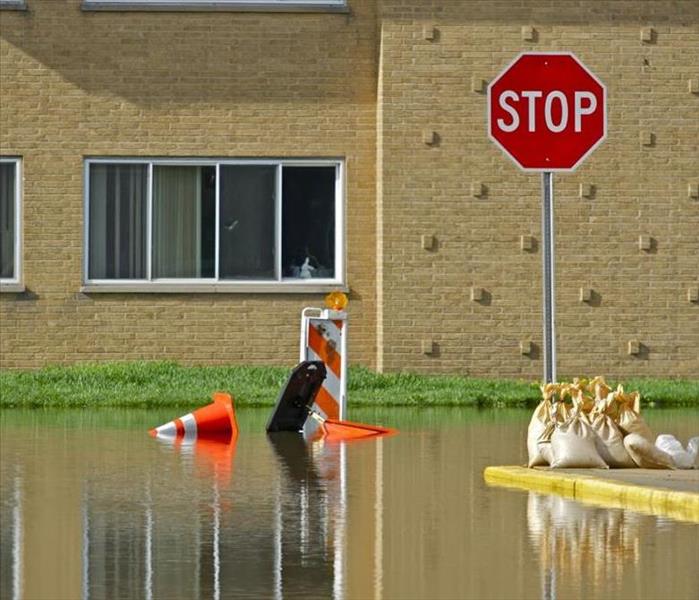How To Prevent Rain Damage to Your Building
3/9/2022 (Permalink)
Seasonal downpours can wreak havoc on your commercial property. During a strong storm in Kaysville, UT, there is a heightened risk of rain damage to your building. Fortunately, there are many steps you can take to decrease your chances of flooding and protect the structure from both water damage and secondary issues such as mold growth.
Control Water Flow To Prevent Rain Damage
Flood prevention starts with a tight building envelope. Begin with a thorough inspection of every possible place where excess moisture is likely to enter your structure:
- Does the roof pitch encourage efficient runoff?
- Is your roof intact?
- Are the windows and doors well-sealed when shut?
- Can you identify any weak spots where exterior walls meet the roof?
- Is your foundation stable and free of cracks?
The harder it is for water to get into your building, the less likely you are to find water damage during a storm, particularly on the upper levels. A frequent survey of the building is an important part of a preventative maintenance plan.
Prevent Condensation Buildup
A spring rainstorm can mess with the temperature control inside your building. Condensation happens when warm air comes into contact with a cold surface. The conflicting temperatures pull moisture from the air and cause it to bead up, leading to potential rain damage. Common places where condensation occurs include HVAC systems and behind or beneath appliances. If you catch the problem quickly, you can take measures to even out temperatures so that it doesn't become a bigger issue.
Improve Ventilation Throughout Building
While it's important to keep floodwaters out of your building, you want to make sure that your efforts don't stifle ventilation. Stale air can lead to higher humidity levels, which create a prime environment for black mold growth. Keep your HVAC system running even when people aren't in the building to keep airflow constant throughout the building. It's also a good idea to test your air quality on a regular basis so that you can identify potential issues before they cause a problem.
Protect Basement From Backflow
During a heavy storm, it is not uncommon for municipal sewers to become full with the extra runoff the event produces. This may be bad news for your building, particularly if you don't have valves to stop the sewer from backing up and releasing through drains inside the structure. When this happens, quick action is the key to minimizing the damage that it may cause.
Storm damage restoration experts recommend that you install a sump pump in your basement to start the process of removing excess water as soon as the device is triggered. The less time that standing water spends in your building, the less destructive it is likely to be.
You can't always keep all excess moisture out of your building, especially during a particularly heavy storm. You can, however, minimize the ability of the excess water to enter your building, and you can take measures to control humidity and moisture issues inside the structure. The more precautions you take, the more likely you are to avoid excessive rain damage.





 24/7 Emergency Service
24/7 Emergency Service
